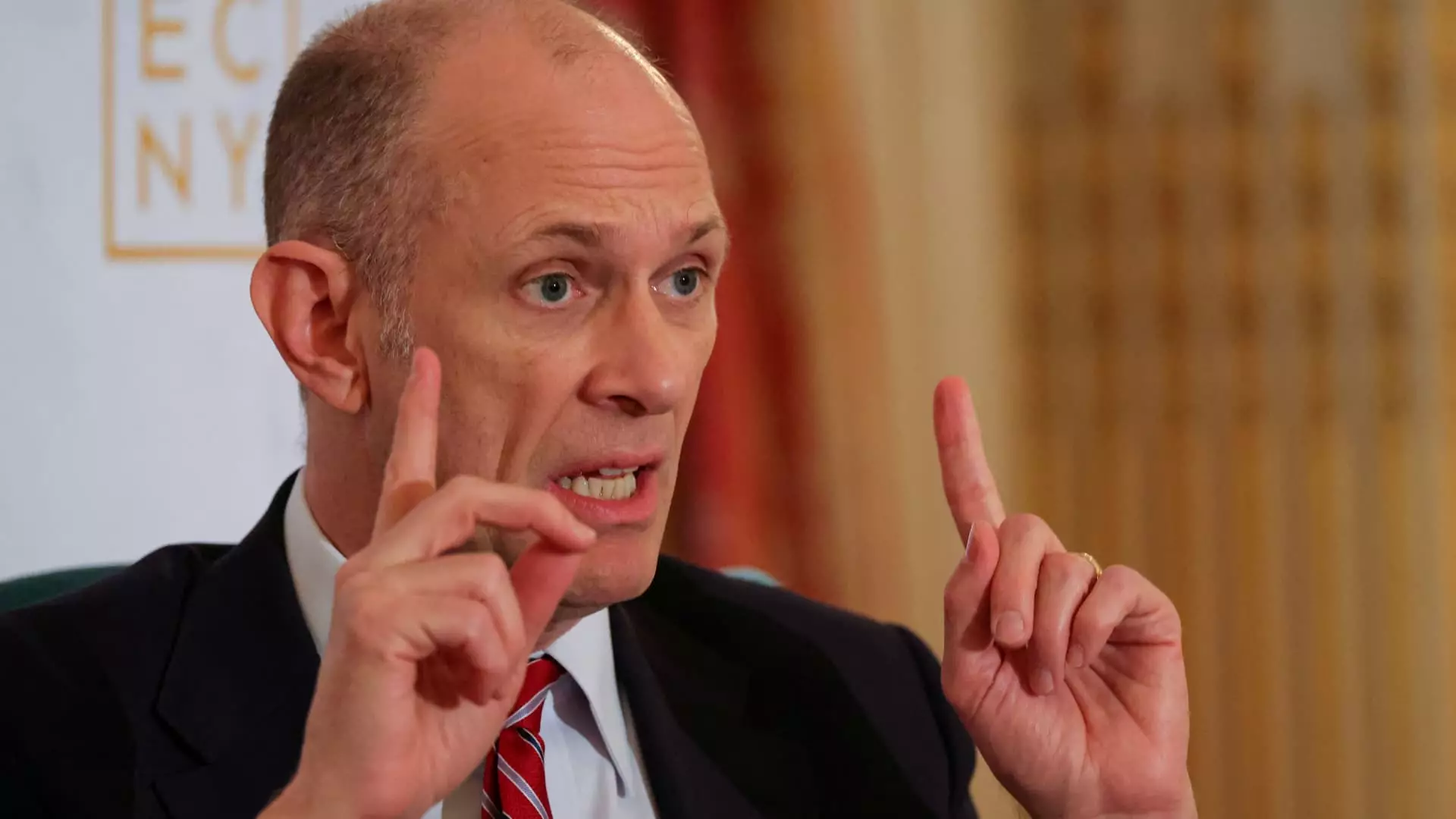The tumultuous landscape of U.S. trade policy has reached yet another unsettling episode, courtesy of President Donald Trump’s latest tariff threats. For those of us who have been tracking economic indicators, this development raises alarm bells that extend well beyond the mere clanging of marketplace dynamics. Chicago Federal Reserve President Austan Goolsbee’s comments reflect the anxiety swirling around these unpredictable shifts, especially concerning their intersection with monetary policy. The Fed’s guidance traditionally aims for stability, yet the president’s cavalier approach to tariffs yields uncertainties that can reverberate through the economy, potentially leading us down a precarious path of stagflation.
Tariffs have an intricate way of complicating fiscal policy, creating an intricate web of economic implications that often elude simplistic analysis. Goolsbee’s sentiment—that the Federal Reserve will likely hold off on altering interest rates as it assesses the shifting landscape of trade—hits the nail on the head. How can the central bank chart a course for rate adjustments when the very policy landscape it must navigate teeters unpredictably from one presidential tweet to another?
Inflation: The Invisible Threat
Inflation has emerged as a specter haunting not just economic forecasts but the daily lives of ordinary citizens. Goolsbee was candid when he noted, “I know people hate inflation.” This statement captures a fundamental truth: rising prices erode purchasing power and cast a shadow over economic health. With the threat of tariffs—such as the proposed 50% duty on European imports and heavy charges on products like iPhones manufactured abroad—the likelihood of price increases looms large. In a consumer-driven economy, such inflationary pressures can stifle spending and ultimately slow growth.
The prospect of stagflation, a toxic combination of stagnant growth and high inflation, paints a dire picture. If Trump’s trade antics succeed in spiking prices while simultaneously undermining economic growth, we could find ourselves in a scenario deemed “the worst situation” by Goolsbee himself. One wonders: is this the price we pay for the administration’s bravado? As Central Bank officials scramble to interpret the economic consequences of President Trump’s aggressive trade strategy, we witness an alarming convergence of fiscal arrogance and an apathetic view of the broader economic landscape.
The Federal Reserve’s Dilemma
Goolsbee’s viewpoint sheds light on the predicament the Federal Reserve faces: caught in the middle of political theatrics and the pressing need for responsible monetary policy. The ongoing conversations surrounding interest rates indicate that even the most optimistic growth projections hinge heavily on a return to order in trade relations. Goolsbee conveyed a cautious optimism about future economic growth, aspiring for a constructive environment that would allow interest rates to meaningfully drop over the next year. Yet, with tariffs hanging in the balance, that optimism is threatened by the realities of President Trump’s mercurial trade policies.
Historically, the Fed has favored a data-driven approach to setting rates, leveraging indicators to guide decisions. Today, however, they find themselves attempting to make predictions not just based on existing data but on the shifting whims of legislation and trade policy. The notion of holding off on immediate rate cuts appears prudent; the temptation to make hasty decisions may lead to further economic destabilization. Hence, Goolsbee’s reluctance to lock into any concrete commitments reveals an acute awareness of the current quandary.
The Broader Economic Narrative
Amid this maraschino cherry of economic challenges lies a more profound narrative—one that calls into question the very effectiveness of aggressive trade policy. While tariffs are often defended as tools for national economic security and job protection, they frequently expose a hollowness underlying such claims. In reality, they can perpetuate volatility and uncertainty, exacerbating economic distress rather than alleviating it.
As Goolsbee articulates a vision for gradual and measured economic recovery, we cannot ignore the reality that this trajectory is increasingly jeopardized by capricious trade tactics. The question at hand is not just if the policies pursued are effective, but who they ultimately serve. The impacts on employment and inflation warrant a critical examination of the true costs of such trade maneuvers. As the Federal Reserve navigates these complexities, it’s clear that sound economic leadership rests not in responsiveness to every impulsive move but in forecasting a future that prioritizes stability wrapped in rational fiscal restraint.
The stakes have never been higher. With soaring inflation fears and an unsettled economic environment, we must remain vigilant against the intoxicating allure of quick-fix solutions that carry potentially crippling long-term consequences.

